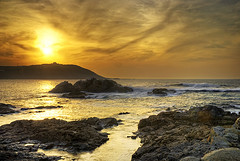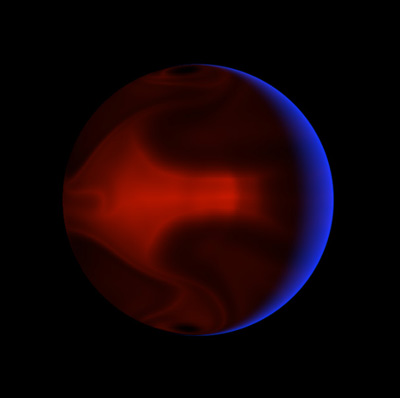… I certainly don’t mean “capable of supporting life of the sort found on Earth, or even recognisably similar at a glance”. Yeah, it’s another (albeit milder) sexing-up-science-headlines post! The Kepler telescope has confirmed the discovery of the first “Earth-like” exoplanet, says COSMOS Magazine (who, in fairness, are a good science publication), while Wired picked the more honest “definitively rocky”. Basically, “Earth-like” in this context means “not a gas planet”; from the Wired piece:
… the starquake measurements make astronomers even more certain that Kepler-10b is a ball of rock. COROT-7b’s host star is magnetically active, Batalha says, making it difficult to tease the planet’s gravitational pull from the star’s own magnetic jitters. Some measurements of the planet’s mass leave room for other interpretations of the planet’s composition, like a planet that is more than half water.
Kepler-10b, on the other hand, is denser than the Earth, meaning it is probably made up of rock and iron.
Unfortunately, the new rocky world is hot enough to melt iron. It orbits its star once every 0.84 days, meaning the planet is 23 times closer to its star than Mercury is to the sun. At such a close orbiting distance, the planet shows the same face to the star at all times, the same way the moon always shows the same face to the Earth. Temperatures on the daytime side of the planet would reach 2780 degrees Fahrenheit, as hot as some red dwarf stars.
So: in a totally different orbital zone to Earth, with no day/night transition like Earth’s, no atmosphere like Earth’s, and a temperature that ensures there isn’t and probably never was any biosphere like Earth’s. But hey, it’s made of rocks – just like Earth!
Look, I’m pretty much a lifelong space geek, and I think this is an awesome discovery. But this journalistic upselling of new discoveries just cheapens them, y’know?
 I’ll wager you’ve caught at least a hint of this story already:
I’ll wager you’ve caught at least a hint of this story already: 